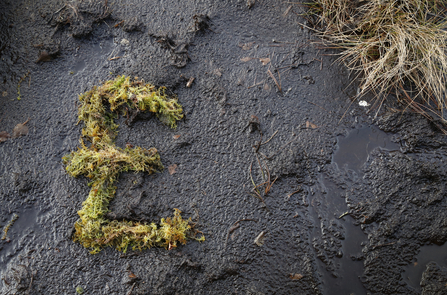Funding is needed to support restoration and management activities as well as incentivise the long-term conservation of healthy peatlands. The scale of peatland degradation in the UK and the current rate of restoration delivery means that existing funding streams need to be more strategic and agile. Existing budgetary commitments are likely to be insufficient to overcome the current problems – such as delivery at scale and sector capacity – if UK peatlands are to be restored and sustainably managed.
The costs of inaction are huge. The Committee on Climate Change (CCC) estimates the present value costs of emissions by degraded peatlands over the period to 2040 to sit in the range of £13.75 billion to £16.2 billion1. Consideration of other degradation losses further increase these estimates2,3, adding perhaps £1.5 billion for biodiversity losses to 2040.

Sphagnum Moss - Credit: Scottish Natural Heritage
Sources of funding across the UK
Below are details of some funding and finance options available to help undertake peatland restoration. If there are additional sources of funding for peatlands that you would like to see featured on this page, please contact info@iucn.org.uk.
Government funding
Recent high level funding commitments from government directly in support of peatland restoration have been made. The list below is not exhaustive but provides an indication of the level of funding committed and examples of funding on offer:
England
The UK Government has pledged over £50 million in peat restoration, with the aim to restore approximately 35,000 hectares of peatland in England. So far, £33 million has been allocated to projects through the following grants:
-
£16 million Nature for Climate Peatland Grant Scheme (available until 2025). This has been extended with additional funding into 2026.
-
£10 million DEFRA fund
-
Additional spend through Landscape Recovery (peatlands form part of £25 million spend in 2023)
Additional funding has been allocated for research and development, with a focus on lowland agricultural peat through a £3.1 million lowland agricultural peat water discovery pilot (LAPWDP), £3.8 million lowland agricultural peat small infrastructure pilot (LAPSIP), £6.6 million Lowland Peat Research and Development Programme and £5 million Paludiculture Exploration Fund.
Wales
Wales adopted the National Peatland Action Programme in 2020 – a five-year peatland restoration plan funded by the Welsh Government to coordinate restoration activities across the country. The programme aims to restore 600-800 hectares of peatland per year, and the Welsh Government committed to supporting the programme by investing £1 million per year. This investment has so far been exceeded every year – for example, an additional £1.1 million was allocated from the Welsh Government’s Rural Investment Scheme in 2022/23. The Government has pledged to invest a further £2.5 million in restoration over the next two years (2024 and 2025).
In 2023-24, the following funding was allocated:
-
£623,696 through the Strategic Allocated Funding Grant
-
£103,981 through the Development Grant
-
£485,231 through the Delivery Grant
2025 saw the launch of the £700,000 Peatland Restoration Grant.
Northern Ireland
The Department of Agriculture, Environment and Rural Affairs (DAERA) launched the £3 million 2024-2027 Peatland Challenge Fund in 2024 to support projects that will protect and improve our environment by restoring peatlands. This is part of the 2023-2028 Environment Fund.
Scotland
Scottish Government has committed to spend £250 million to support peatland restoration over ten years (2020-2030), with a target of restoring 250,000 hectares of degraded peatland by 2030. In the first few years (2020-2023), £45.3 million was spent, with 29,157 hectares of peatland restored between 2020-2024.
Public funding
Environmental stewardship funding
Delivered independently in each devolved nation and typically through agri-environment schemes which have replaced the Common Agricultural Policy. The details of these schemes are currently being developed in each nation and links to the most recent information available on are:
England:
Future of farming in England - GOV.UK
Wales:
Sustainable Farming Scheme | GOV.WALES
Scotland:
Agri-Environment Climate Scheme (ruralpayments.org) with an Agricultural Reform Route Map (ruralpayments.org) setting out the options for delivery post-AECS from 2025 onwards.
Northern Ireland:
Agri-environment schemes | Department of Agriculture, Environment and Rural Affairs
Grant funding
There are a number of publicly funded grants available for projects which research, restore or otherwise support positive outcomes for peatlands. Here are some examples:
England: Paludiculture Exploration Fund, Farming in Protected Landscapes (FIPL)
Wales: Additional funding for future water quality programmes announced | GOV.WALES
Scotland: Peatland ACTION funding
Northern Ireland: PEACEPLUS Programme (funding partnership between the European Union, the Governments of the United Kingdom and Ireland, and the Northern Ireland Executive)
UK-wide:
Natural Environment Research Council
Some European Commission funding is still available e.g., Interreg, Horizon Europe.
Private finance
There are multiple private finance options which support peatland research, restoration, community engagement and other benefits for peatlands. Here are some examples:
The Peatland Code is a voluntary standard for UK peatland projects wishing to market the climate benefit of restoration through the sale of carbon credits.
Private water companies allocate funding through their Asset Management Plan cycles to address various environmental and social objectives, including peatland restoration. Examples include South West Water’s contribution to the South West Peatland Partnership and United Utilities Green Recovery programme.
Many businesses, charitable and philanthropic foundations offer grant funding. Here are some examples:
Biffa Award (Nature Recovery theme)
References
-
Climate Change Committee. Peatland Case Study. 2019. Available from: Outcomes-Peatland-case-study.pdf.
-
Harlow J, Clarke S, Phillips M, Scott A. Valuing land-use and management changes in the Keighley and Watersheddles catchment. Peterborough: Natural England Research Report No.44. 2012. Available from: http://publications.naturalengland.org.uk/file/1312018.
-
Glenk K, Martin-Ortega J. The economics of peatland restoration. Journal of Environmental Economics and Policy. 2018 Feb 19;7(4):345–62. https://doi.org/10.1080/21606544.2018.1434562.
